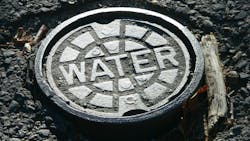New report finds water infrastructure investment could add $3.9 trillion to U.S. GDP
A new report released by the US Water Alliance, Stantec and One Water Econ reveals that closing the nation’s water infrastructure investment gap could add $3.9 trillion to U.S. GDP and generate $7.3 trillion in economic output over the next two decades.
The study, Tapping Potential: The Economic Benefits of Investing in Water Infrastructure, is the most comprehensive economic analysis ever produced under the Alliance’s Value of Water Campaign. Developed in partnership with global design and engineering firm Stantec, the report uses new data and economic modeling to quantify how water infrastructure investment supports jobs, industry and economic resilience across the United States.
“Water infrastructure is the backbone of every community and industry,” said Andrew Burnham, Stantec vice president for the management and technology sector, in a press release. “Every dollar invested in water supports well-paying jobs and protects the economic output of critical industries. This report paints a clear picture of the nation’s water infrastructure needs and the financial opportunities investment delivers.”
Federal investment in water infrastructure has fallen sharply—from 50% of all funding four decades ago to just 7% today—leaving much of the nation’s aging water systems under strain. According to the report, addressing the funding shortfall and accounting for operations and maintenance needs could support more than 1.4 million jobs annually while improving the reliability of drinking water, wastewater and stormwater systems.
“This report offers a roadmap for the nation: invest in water and reap enormous benefits for people, communities, and the economy. Delays only raise the risks and the costs. Now is the moment to unite for water,” said Mami Hara, CEO of the US Water Alliance, in a press release.
Leaders across the sector echoed the report’s call for urgent, sustained investment.
“Metropolitan communities are the backbone of the U.S. economy, and they cannot thrive without modern, resilient water systems,” said Tom Dobbins, CEO of the Association of Metropolitan Water Agencies (AMWA), in a press release. “This research underscores what our members experience every day: sustained investment is essential to protect public health and fuel economic growth—especially as water systems face challenges from emerging contaminants like PFAS.”
Adam Krantz, CEO of the National Association of Clean Water Agencies (NACWA), added, “Clean water utilities are on the frontlines of protecting public health and the environment. This report affirms what we have long known—that closing the investment gap will not only safeguard clean water, but also strengthen the entire U.S. economy.”
For rural communities, the stakes are equally high. “Rural communities play a vital role in our economy but face some of the steepest per-capita water infrastructure needs in the nation,” said Matt Holmes, CEO of the National Rural Water Association, in a press release. “With the right investment, we can ensure rural communities remain sustainable, protect public health, and create economic opportunity.”
Ralph Exton, CEO of the Water Environment Federation (WEF), emphasized the broader benefits of investment: “This report shows that every dollar invested not only improves infrastructure but also creates good jobs, strengthens communities, and advances innovation in water management, supporting the $47 billion circular water economy and a resilient One Water future.”
The full report, Tapping Potential: The Economic Benefits of Investing in Water Infrastructure, is available through the Value of Water Campaign.
